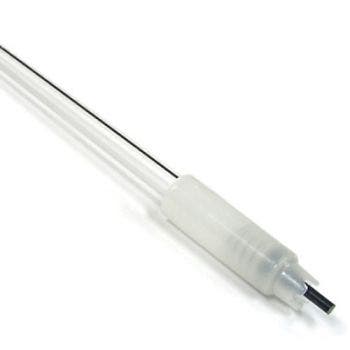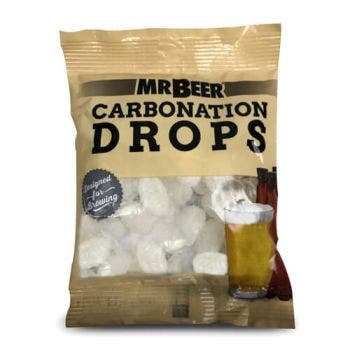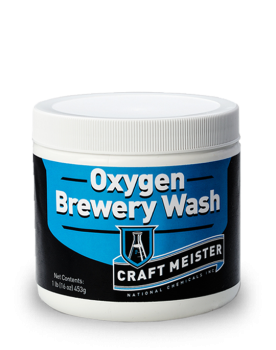Thunder Bay IPA
Grapefruit and resinous pine notes dominate the nose, while the palate enjoys a significant malt body that perfectly balances the intense hop presence provided by the 100% Centennial hop additions. A modest amount of IBUs makes this beer dependably drinkable, even among those that aren’t typically into IPAs.
What You Get
1 Can of American Ale Brewing Extract (HME)
3 Packets of BrewMax LME Pale
1 Packet of 2-Row Malt
1 Packet of Crystal 40 Malt
2 Packets of Centennial Pellet Hops
1 Packet of US-05
5 Hop Sacks
1 Packet of No-Rinse Cleanser
For Fans Of
Bell's Brewing Two-Hearted Ale
Founders Brewing Centennial IPA
Brew Specs
Flavor: Hoppy
Original Gravity: 1.065
Final Gravity: 1.014
ABV: 6.7%
SRM: (Color): 10
IBU: (Bitterness): 55
STEP 1: SANITIZING
Cleaning is one of the most important steps in brewing. It kills microscopic bacteria, wild yeast, and molds that may cause off-flavors in your beer. Make certain to clean all equipment that comes in contact with your beer by following the directions below:
1. Fill clean keg with warm water to line mark 1 on the back, then add ½ pack (about 1 tablespoon) of No-Rinse Cleanser and stir until dissolved. Once dissolved, the solution is ready to use. Save the remaining ½ of No-Rinse Cleanser because you will need it for bottling.
2. Screw on lid and swirl the keg so that the cleaning solution makes contact with the entire interior of the keg, including the underside of the lid. Note that the ventilation notches under the lid may leak solution. Allow to sit for at least 2 minutes and swirl again.
3. To clean the spigot, open it fully and allow liquid to flow for 5 seconds and then close
4. Pour the rest of the solution from the keg into a large bowl. Place your spoon/whisk, can opener and measuring cup into the bowl to keep them cleaned throughout the brewing process. Leave them immersed for at least 2 minutes in cleaning solution prior to using.
5. After all surfaces have been thoroughly cleaned, do not rinse or dry the keg or utensils. Return lid to top of keg, proceed immediately to brewing.
STEP 2: BREWING
Brewing beer is the process of combining a starch source (in this case, a malt brewing extract) with yeast. Once combined, the yeast eats the sugars in the malt, producing alcohol and carbon dioxide (CO2). This process is called fermentation.
1. Remove the yeast packet from under the lid of the can of Brewing Extract (you won’t be using
this), then place the unopened can and BrewMax LMEs in hot tap water.
2. Add all the packets of grains to a Muslin Hop Sacks tying it closed.
3. Using a measuring cup, pour 6-8 cups of water into your clean 4-quart or larger pot (Use just
enough water to cover the grains). Bring your pot of water up to above 155 degrees F.
4. Add the grain sack to the hot water and steep for 30 minutes between 155-165 degrees.
5. Carefully lift the grain sack out of the pot, and place into a strainer/colander. Rinse the sack
over the pot with 1 cup of hot water each. Let drain. Do NOT squeeze the grain bag. Discard
grain bag.
6. Place 1/2 of one packet of Centennial pellet hops into a hop sack, tying it closed, then trim
away excess material.
7. Bring grain water to a low rolling boil, add in hop sack, and let simmer at a low boil for 5
minutes.
8. While this is boiling, place the remaining 1/2 packet of Centennial hops packet into a hop sack
and trim away excess material.
9. After the 5-minute boil has passed, add the 2nd hopsack and simmer at a low boil for another
10 minutes
10. While this is boiling, place ½ of the packet of Centennial hops packet into a hop sack and
trim away excess material. (For the remaining ½ of packet store in a Ziplock bag in the freezer.
You want as little air as possible in the bag. You will use the remaining packet during dry
hopping)
11. After the 10-minute boil has passed, remove from heat and add the 3rd hopsack.
12. Open the can of Brewing Extract and LMEs and pour the contents into the hot mixture in
your pot. Stir until thoroughly mixed. This mixture of unfermented beer is called wort
13. Fill your fermenter with cold tap water to the mark 1 on the back. If using any other
fermenter this would be approximately 1 gallon of water.
14. Pour the wort, including the hop sacks, into your fermenter, and then bring the volume of the
fermenter to mark 2 by adding more cold water. Leave the hop sacks in the wort for the duration
of fermentation. (If you have a different fermenter top it off with cold water to the 8.5-liter
mark).
15. Stir your wort mixture vigorously with your sanitized spoon or whisk.
16. Sprinkle the Safale US-05 yeast packet into the keg, and screw on the lid. Do not stir.
Put your fermenter in a location with a consistent temperature between 70° and 76° F (21°-
24° C), and out of direct sunlight. Ferment for 21 days.
STEP 3: Dry-Hopping
Dry hopping is the process of adding hops to a beer which will impart more hop flavor and
aroma in your beer.
1. At day 16 of fermentation add the remaining 1/2 packet of Centennial hops into your
fermenter. Careful remove the lid from your fermenter and dump the pellet hops in. Quickly
close the lid.
STEP 4: BOTTLING & CARBONATING
After 21 days, taste a small sample to determine if the beer is fully fermented and ready to bottle. If it tastes like flat beer, it is ready. If it’s sweet, then it’s not ready. Let it ferment for 3 more days (24 total). At this point, it is time to bottle. Do not let it sit in the fermenter for longer than 24 days total.
1. When your beer is ready to bottle, fill a 1-gallon container with warm water, then add the remaining ½ pack of the No-Rinse Cleanser and stir until dissolved. Once dissolved, it is ready to use
2. Distribute the cleaning solution equally among the bottles. Screw-on caps (or cover with a metal cap if using glass bottles) and shake bottles vigorously. Allow to sit 10 minutes, then shake the bottles again. Remove caps and empty all cleaning solutions into a large bowl. Use this solution to clean any other equipment you may be using for bottling. Do not rinse.
3. Add 2 Carbonation Drops to each 740-mL bottle. For 1-liter bottles, add 2 ½ drops; for ½-liter bottles add 1 drop. Alternatively, you can add table sugar using this table as a guide.
4. Holding the bottle at an angle, fill each bottle to about 2 inches from the bottle’s top.
5. Place caps on bottles, hand tighten, and gently turn the bottle over to check the bottle’s seal. It is not necessary to shake them.
6. Store the bottles upright and out of direct sunlight in a location with a consistent temperature between 70°-76°F or 21°-24°C. Allow sitting for a minimum of 14 days. If the temperature is cooler than suggested it may take an additional week to reach full carbonation.
TIP FROM OUR BREWMASTERS
After the primary carbonation has taken place your beer is ready to drink. We recommend putting 1 bottle in the refrigerator at first for 48 hrs. After 48hrs. give it a try and if it is up to your liking put the rest of your beer in the fridge. If it does not taste quite right, leave the bottles out at room temp for another week or so. Keep following this method until your brew tastes just how you like it.
This process is called conditioning and during this time the yeast left in your beer can help clean up any off-flavors. Almost everything gets a little better with time and so will your beer








